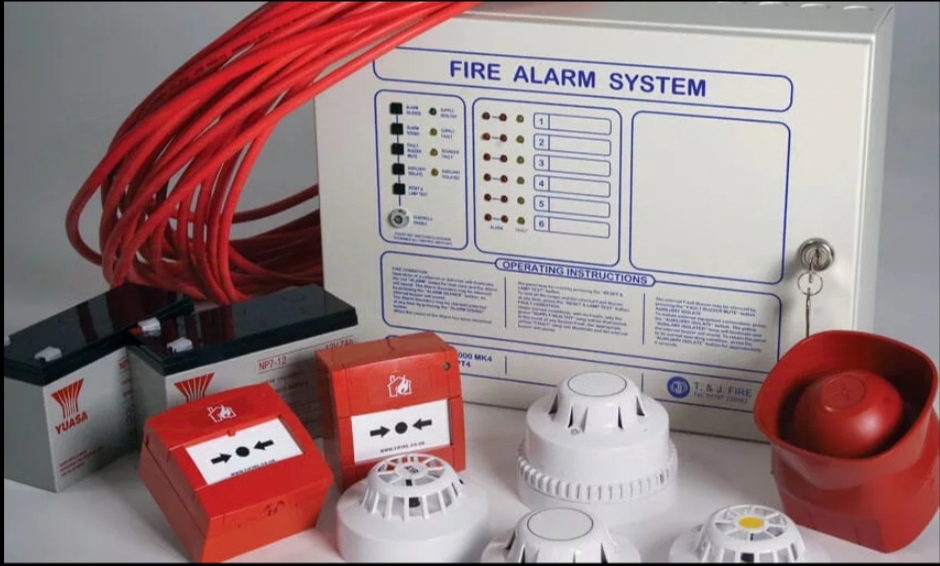When it comes to protecting your home from the devastating effects of a fire, having a properly installed and maintained fire alarm system is crucial. For landlords, ensuring compliance with fire alarm regulations often involves obtaining a Fire Alarm Certificate Landlord. Navigating the various regulations and codes surrounding fire alarms can be overwhelming for many homeowners. Understanding these rules not only ensures your home is compliant with legal standards but also significantly enhances your safety and that of your loved ones. This blog will provide a clear overview of fire alarm regulations and codes, offering homeowners the information they need to make informed decisions about their fire alarm systems.
Why Fire Alarm Regulations Matter
Fire alarm regulations are designed to ensure that buildings, including homes, are equipped with effective fire detection systems. These regulations help minimize the risk of fire-related injuries and fatalities by specifying how fire alarms should be installed, maintained, and tested. By adhering to these standards, homeowners can ensure their fire alarm systems provide reliable early warnings in case of a fire.
Key Fire Alarm Codes and Standards
Fire alarm codes and standards can vary depending on your location, but there are some common regulations that most homeowners need to be aware of. These guidelines are often derived from national standards, such as those set by the National Fire Protection Association (NFPA) and the International Code Council (ICC).
National Fire Protection Association (NFPA) Standards
The NFPA sets forth several standards that govern fire alarm systems. One of the most important is NFPA 72, the National Fire Alarm and Signaling Code. This code outlines the requirements for the installation, performance, and maintenance of fire alarm systems. NFPA 72 covers everything from the types of fire alarms to their placement and testing procedures.
International Building Code (IBC) and International Residential Code (IRC)
In addition to NFPA standards, the International Building Code (IBC) and International Residential Code (IRC) provide guidelines for fire alarm systems in residential and commercial buildings. The IBC typically applies to commercial properties, while the IRC is more relevant for residential homes. These codes ensure that fire alarm systems are designed and installed to provide adequate protection based on the type and use of the building.
Fire Alarm System Requirements
Understanding the specific requirements for your fire alarm system is essential. These requirements generally cover the type of system you should have, its placement, and maintenance.
Types of Fire Alarm Systems
There are several types of fire alarm systems available, including smoke detectors, heat detectors, and combination systems. Smoke detectors are the most common and are designed to detect smoke particles in the air. Heat detectors, on the other hand, respond to changes in temperature. Combination systems integrate both smoke and heat detection to provide a more comprehensive approach to fire detection.
Placement and Installation
Proper placement and installation of fire alarms are crucial for their effectiveness. Most codes require that smoke detectors be installed in every bedroom, outside each sleeping area, and on every level of the home. Additionally, alarms should be installed on the ceiling or high on the wall, as smoke rises and will reach these detectors more quickly. It’s also important to ensure that alarms are not installed near windows, doors, or vents where drafts could interfere with their operation.
Maintenance and Testing
Regular maintenance and testing are vital to ensure that your fire alarm system remains functional. Most regulations require that smoke detectors be tested monthly and that their batteries be replaced at least once a year. Additionally, the entire fire alarm system should be professionally inspected and serviced according to the manufacturer’s recommendations or local regulations. Keeping a record of these tests and maintenance activities is also important for compliance purposes.
Local and State Regulations
While national standards provide a general framework, local and state regulations may impose additional requirements. It’s essential to check with your local fire department or building authority to understand any specific codes or regulations that apply to your area. These local regulations might include additional requirements for fire alarm placement, system types, or maintenance procedures.
Benefits of Compliance
Adhering to fire alarm regulations offers numerous benefits. First and foremost, it enhances the safety of your home by ensuring that your fire alarm system is effective and reliable. Compliance with regulations also helps you avoid potential fines or penalties for failing to meet legal standards. Moreover, a well-maintained fire alarm system can lower your homeowner’s insurance premiums, as insurance companies often offer discounts for homes with up-to-code safety features.
Conclusion
Understanding fire alarm regulations and codes is an important responsibility for homeowners. By familiarizing yourself with national standards, local codes, and the specific requirements for your fire alarm system, you can ensure that your home is well-protected against the threat of fire. Regular maintenance, proper installation, and adherence to regulations not only enhance your safety but also offer peace of mind knowing that you are in compliance with legal standards. Remember, when in doubt, consult with a professional to ensure that your fire alarm system meets all necessary requirements and provides the best possible protection for your home and family, If you want to stay updated with posts like this, please follow us on Smoothstack Lawsuit.
